Cpt1a Drives primed-to-naïve pluripotency transition through lipid remodeling
- PMID: 39349670
- PMCID: PMC11442460
- DOI: 10.1038/s42003-024-06874-3
Cpt1a Drives primed-to-naïve pluripotency transition through lipid remodeling
Abstract
Metabolism has been implicated in cell fate determination, particularly through epigenetic modifications. Similarly, lipid remodeling also plays a role in regulating cell fate. Here, we present comprehensive lipidomics analysis during BMP4-driven primed to naive pluripotency transition or BiPNT and demonstrate that lipid remodeling plays an essential role. We further identify Cpt1a as a rate-limiting factor in BiPNT, driving lipid remodeling and metabolic reprogramming while simultaneously increasing intracellular acetyl-CoA levels and enhancing H3K27ac at chromatin open sites. Perturbation of BiPNT by histone acetylation inhibitors suppresses lipid remodeling and pluripotency transition. Together, our study suggests that lipid remodeling promotes pluripotency transitions and further regulates cell fate decisions, implicating Cpt1a as a critical regulator between primed-naive cell fate control.
© 2024. The Author(s).
Conflict of interest statement
The authors declare no competing interests.
Figures
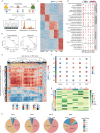
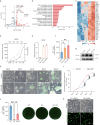
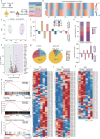
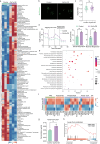

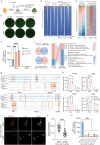

Similar articles
-
DNA Methylation is Correlated with Pluripotency of Stem Cells.Curr Stem Cell Res Ther. 2017;12(6):442-446. doi: 10.2174/1574888X11666161226145432. Curr Stem Cell Res Ther. 2017. PMID: 28025937 Review.
-
INO80 promotes H2A.Z occupancy to regulate cell fate transition in pluripotent stem cells.Nucleic Acids Res. 2021 Jul 9;49(12):6739-6755. doi: 10.1093/nar/gkab476. Nucleic Acids Res. 2021. PMID: 34139016 Free PMC article.
-
Txnip regulates the Oct4-mediated pluripotency circuitry via metabolic changes upon differentiation.Cell Mol Life Sci. 2024 Mar 15;81(1):142. doi: 10.1007/s00018-024-05161-y. Cell Mol Life Sci. 2024. PMID: 38485770 Free PMC article.
-
bHLH Transcription Factor Math6 Antagonizes TGF-β Signalling in Reprogramming, Pluripotency and Early Cell Fate Decisions.Cells. 2019 Jun 2;8(6):529. doi: 10.3390/cells8060529. Cells. 2019. PMID: 31159500 Free PMC article.
-
Epigenetic metabolites license stem cell states.Curr Top Dev Biol. 2020;138:209-240. doi: 10.1016/bs.ctdb.2020.02.003. Epub 2020 Mar 21. Curr Top Dev Biol. 2020. PMID: 32220298 Review.
Cited by
-
Palmitic acid and palmitoylation in cancer: Understanding, insights, and challenges.Innovation (Camb). 2025 Apr 29;6(8):100918. doi: 10.1016/j.xinn.2025.100918. eCollection 2025 Aug 4. Innovation (Camb). 2025. PMID: 40814339 Free PMC article. Review.
-
Loss of Cpt1a results in elevated glucose-fueled mitochondrial oxidative phosphorylation and defective hematopoietic stem cells.J Clin Invest. 2025 Jan 9;135(5):e184069. doi: 10.1172/JCI184069. J Clin Invest. 2025. PMID: 39786963 Free PMC article.
References
MeSH terms
Substances
Grants and funding
LinkOut - more resources
Full Text Sources
Molecular Biology Databases

